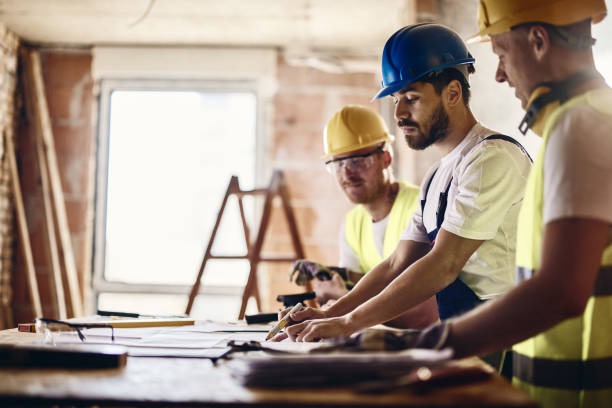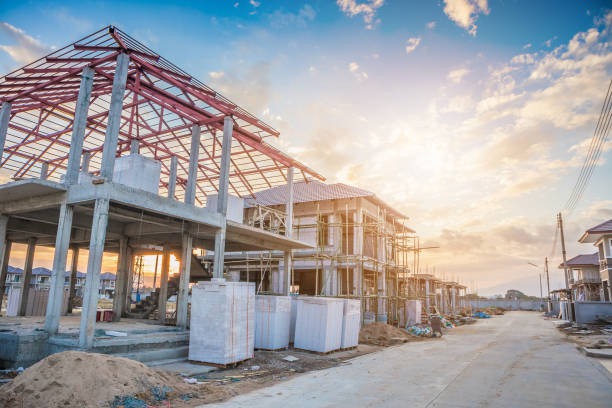Repairing a property after damage can be stressful for homeowners or property managers. Different situations result in various repair timelines, depending on certain specifics. Property owners often wonder why similar projects can sometimes take longer or shorter to complete than expected.
Main Factors Affecting the Duration of Property Repairs
Extent of the Damage
The level of damage is the primary reason why property repairs might take longer to finish. Minor damages, such as paint scratches or small leaks, usually get fixed within days. However, larger issues, like flooded basements, fire damage, or structural collapses, often require comprehensive disaster restoration Canton, which can take several weeks or even months to complete.
The severity of the damage influences repair duration greatly since it determines how many steps and specialists will be involved. Disaster restoration tasks like inspections, damage assessments, demolition, cleaning, and complete reconstruction will take extensive periods and cause repairs to last significantly longer.
Availability of Materials and Supplies
The time needed to finish repairs depends heavily on easily obtaining necessary building materials. Commonly accessible materials like drywall, paint, or basic lighting fixtures can be promptly sourced, thus speeding up the project timeline. Conversely, specialized materials or customized items, such as unique tiles or custom cabinetry, are not readily available and will need ordering ahead, causing delays.
Additionally, material shortages or supply-chain disruptions often slow down property repairs extensively. Therefore, considering readily available material options conserves substantial time during repairs and restorations.
Labor Availability and Scheduling
Having the appropriate workforce available significantly affects the duration of property repairs. Some skilled tradespeople, such as electricians, plumbers, or carpenters, might have tight schedules that delay repairs substantially if they aren’t booked early.
Project coordination is another significant component; careful and organized scheduling enables smoother workflows. Miscommunication or poor planning can lead to avoidable delays, while efficient coordination ensures projects stay on track and complete on schedule.
Insurance Approval and Payment Process
Insurance companies typically play a strong part in any significant property repair process. Approval from an insurance provider could be fast, slow, or anywhere in between, depending on how quickly they respond and process claims. Delays usually occur while waiting for adjusters to assess the damage or because of inaccuracies in documentation provided.
Besides approvals, the pace at which insurance providers issue payments impacts repair timelines immensely. Prompt financial settlements enable immediate project progress, while slow payment processes lead to stalled projects.
Weather Conditions and Seasonal Factors
Outdoor property repairs or those involving exterior renovations heavily depend on favorable weather conditions. Construction projects like roofing, painting, masonry, or landscaping require dry, mild weather to proceed smoothly. Rainstorms, snow, icy conditions, or excessive heat could halt work entirely, adding delays to overall repair timelines.
While interior work is generally less weather-dependent, severe weather incidents such as floods or hurricanes significantly disrupt transport and materials supply chains. This disruption indirectly prolongs indoor property repair durations.
Local Regulations and Building Codes
Local municipalities enforce regulations for property repairs and renovations, often requiring specific permits depending on any planned work’s scope. Obtaining these permits requires submitting paperwork, paying fees, and awaiting approval by city officials.
Inspections from local building authorities may also be mandatory before moving forward to each repair phase. Inspection delays or non-compliance with codes slow the repair process and add notably to overall project timelines.
Property Accessibility and Safety
Ease of access to the property influences repair durations considerably. Hard-to-reach locations pose logistical challenges, requiring additional equipment like cranes, scaffolding, lifts, and other special machinery. Procuring this equipment and setting it up takes extra time, contributing to overall delays.
Safety risks within a damaged property could hinder or restrict regular progress if there is a potential danger to workers. Unsafe structures demand stabilization work before standard repairs begin, prolonging the project’s completion time significantly.
Unexpected Complications
Discovering hidden damages and unanticipated complications often prolongs the already-established timelines for repairs. Issues uncovered in the middle of repairs typically need addressing immediately, potentially changing the initial repair strategy completely. Unexpected asbestos, mold growth, structural instabilities, or plumbing or electrical problems are frequent hidden complications. Additionally, emergency sewage cleanup might become necessary if underlying sewage issues are discovered, adding another layer of complexity to the repairs.
Extra inspections, remediation procedures, and structural adjustments to resolve these hidden issues, including emergency sewage cleanup, cause unforeseeable delays. Property owners are advised to allocate buffer times when setting project timelines, allowing for unplanned challenges.
Type of Property
Property types also substantially affect repair durations, as residential buildings significantly differ from commercial properties concerning regulations, repair complexities, and site-specific challenges. Residential property projects, while generally more straightforward, can vary according to whether repairs address a single-family home or multi-family structures like apartment buildings. Commercial properties often present additional complexities, with more specific safety and regulatory standards.
Large office complexes, retail establishments, or warehouses might require additional procedures, environmental assessments, or specialized equipment, extending the overall project timeline significantly more than residential properties. Moreover, the need for ongoing maintenance services, such as janitorial commercial cleaning, becomes critical in these environments to ensure cleanliness and compliance with health standards during and after repairs.
Budget and Financial Constraints
Project funding availability substantially influences the speed of repairs from beginning to end. Having sufficient, immediately available budgets helps secure contractors, purchase construction materials, rent equipment, and arrange other expenses seamlessly and without significant delays.
Limited funds or financing delays promptly pause ongoing repairs. To minimize delays, creating a realistic, clear budget with provisions for unforeseen expenses is strongly recommended before commencing any substantial property repair project.
Closing Remarks
Numerous factors influence how long property repairs will take, from damage extent and material availability to regulatory compliance and unexpected issues. Considering these varied elements realistically while planning and strategizing future property repairs is strongly advised. Promptly involving experienced professionals can streamline complex projects, helping achieve successful outcomes efficiently, minimizing disruption, and enabling safe property usage promptly.




